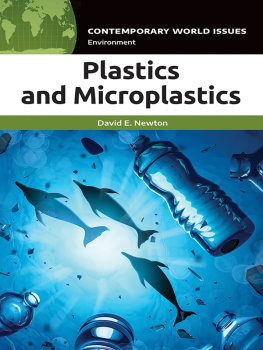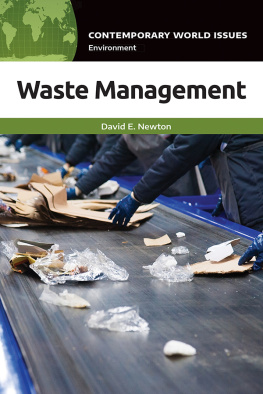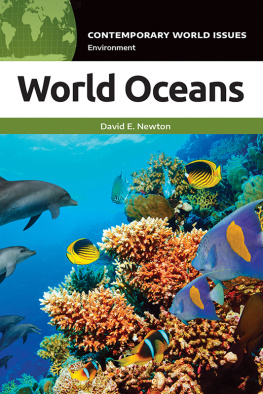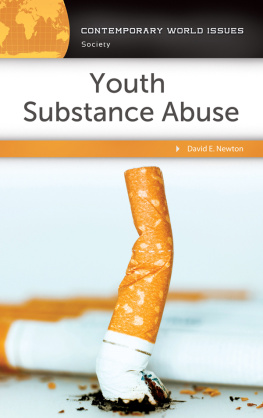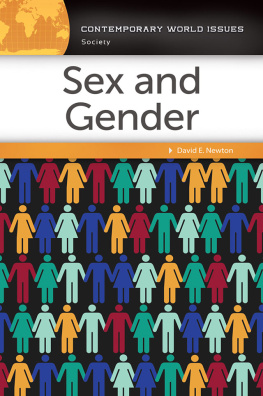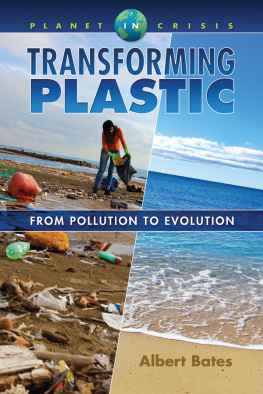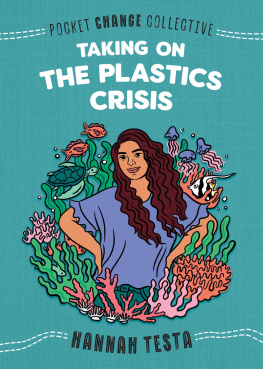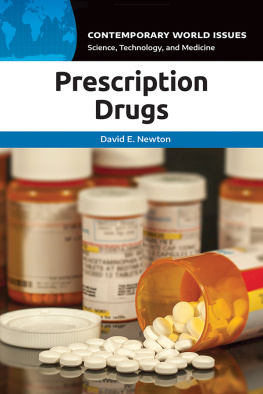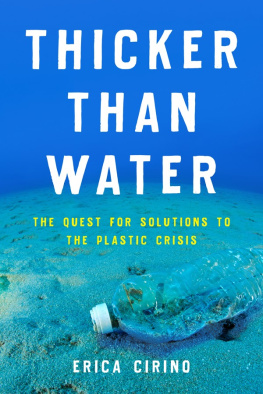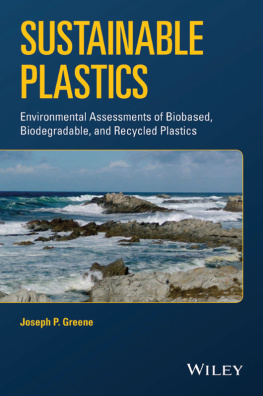Plastics and Microplastics
Recent Titles in the
CONTEMPORARY WORLD ISSUES
Series
Racism in America: A Reference Handbook
Steven L. Foy
Waste Management: A Reference Handbook
David E. Newton
Sexual Harassment: A Reference Handbook
Merril D. Smith
The Climate Change Debate: A Reference Handbook
David E. Newton
Voting Rights in America: A Reference Handbook
Richard A. Glenn and Kyle L. Kreider
Modern Slavery: A Reference Handbook
Christina G. Villegas
Race and Sports: A Reference Handbook
Rachel Laws Myers
World Oceans: A Reference Handbook
David E. Newton
First Amendment Freedoms: A Reference Handbook
Michael C. LeMay
Medicare and Medicaid: A Reference Handbook
Greg M. Shaw
Organic Food and Farming: A Reference Handbook
Shauna M. McIntyre
Civil Rights and Civil Liberties in America: A Reference Handbook
Michael C. LeMay
GMO Food: A Reference Handbook, Second Edition
David E. Newton
Pregnancy and Birth: A Reference Handbook
Keisha L. Goode and Barbara Katz Rothman
Hate Groups: A Reference Handbook
David E. Newton
Books in the Contemporary World Issues series address vital issues in todays society such as genetic engineering, pollution, and biodiversity. Written by professional writers, scholars, and nonacademic experts, these books are authoritative, clearly written, up-to-date, and objective. They provide a good starting point for research by high school and college students, scholars, and general readers as well as by legislators, businesspeople, activists, and others.
Each book, carefully organized and easy to use, contains an overview of the subject, a detailed chronology, biographical sketches, facts and data and/or documents and other primary source material, a forum of authoritative perspective essays, annotated lists of print and nonprint resources, and an index.
Readers of books in the Contemporary World Issues series will find the information they need in order to have a better understanding of the social, political, environmental, and economic issues facing the world today.
CONTEMPORARY WORLD ISSUES
Plastics and
Microplastics
A REFERENCE HANDBOOK
David E. Newton

Copyright 2021 by ABC-CLIO, LLC
All rights reserved. No part of this publication may be reproduced, stored in a retrieval system, or transmitted, in any form or by any means, electronic, mechanical, photocopying, recording, or otherwise, except for the inclusion of brief quotations in a review, without prior permission in writing from the publisher.
Library of Congress Cataloging-in-Publication Data
Names: Newton, David E., author.
Title: Plastics and microplastics : a reference handbook / David E. Newton.
Description: Santa Barbara, California : ABC-CLIO, [2021] | Series: Contemporary world issues | Includes bibliographical references and index.
Identifiers: LCCN 2021008696 (print) | LCCN 2021008697 (ebook) | ISBN 9781440875397 (hardcover) | ISBN 9781440875403 (ebook)
Subjects: LCSH: Plastics. | Microplastics.
Classification: LCC TP1120 .N484 2021 (print) | LCC TP1120 (ebook) | DDC 668.4dc23
LC record available at https://lccn.loc.gov/2021008696
LC ebook record available at https://lccn.loc.gov/2021008697
ISBN: 978-1-4408-7539-7 (print)
978-1-4408-7540-3 (ebook)
252423222112345
This book is also available as an eBook.
ABC-CLIO
An Imprint of ABC-CLIO, LLC
ABC-CLIO, LLC
147 Castilian Drive
Santa Barbara, California 93117
www.abc-clio.com
This book is printed on acid-free paper 
Manufactured in the United States of America
Contents
The United States produces about 234 pounds of plastic waste per person per year, second only to Germany in that category. Americans make up about 4 percent of the world population but produce more than 12 percent of the worlds plastic wastes. They recycle about 9 percent of the plastic wastes they generate and incinerate another 16 percent. The remaining 75 percent of their plastic wastes end up in dumps and landfills. A large fraction of that trash eventually works its way into rivers, streams, lakes, and, eventually, the worlds oceans.
Most people are aware of plastic pollution in the oceans. Newspapers and online websites frequently show pictures of whales and dolphins that have died because of the huge amounts of plastics they have ingested. Or they show disturbing pictures of turtles, seabirds, and other marine organisms that have become entangled in lost fishing nets, traps, and other fishing equipment, left to die because they are unable to eat or move about in their environment.
More recently, stories have begun to appear also about the dangers posed by microplastics, tiny pieces of plastic produced by the breakdown of plastic bags, clothing, tires, cups, eating utensils, building materials, and other substances made of plastic. Although research has just begun on this issue, many experts are already convinced that microplastics are likely to be toxic not only to marine and terrestrial organisms but also to humans.
This information has led to a growing interest in ways of dealing with plastics. Some efforts have been expended on developing very large systems by which wastes can be physically collected in the oceans and transported to sites on land. Other programs have been, and are being, developed to significantly increase the amount of plastic recycled and reused. More and more experts are beginning to talk about large-scale, revolutionary methods for dealing with all types of solid wastes, especially plastic wastes. For example, the zero waste movement has as its primary goal the complete discontinuation of the buildup of plastic wastes at all. A similar concept, the circular, or closed-loop, economy is a method for reducing the harmful effects of plastics at every stage of their life cycle, from extraction to transportation to production to use to reuse.
The challenges posed by plastic wastes are, however, overwhelming. In the first place, plastics are one of the most valuable materials ever discovered or invented by humans. They have a host of chemical, physical, electrical, and other properties that make them the substance of choice for a host of personal, commercial, and industrial products and operations. It is difficult to imagine exactly how we go about weaning ourselves away from some or many of the everyday applications in which plastics occur. Other forces drive the seemingly ever-increasing demand for plastics. For example, companies that have traditionally been based on the recovery and processing of fossil fuels are seeing growing consumer reluctance to continue on this line of business. The threats of climate change are one important element in the call for a reduction in the extraction and use of petroleum and natural gas. For these companies, the conversion of their operations to the production of plastics is an obvious, straightforward, and relatively simple process. So, while concerns about plastic waste grow, the forces for increased production also become more powerful.
This book is designed as a resource for a better understanding of this issue. takes a somewhat different approach, offering the views of 10 individuals as to their own particular experience with or thoughts about issues surrounding the use of plastics in everyday life.

